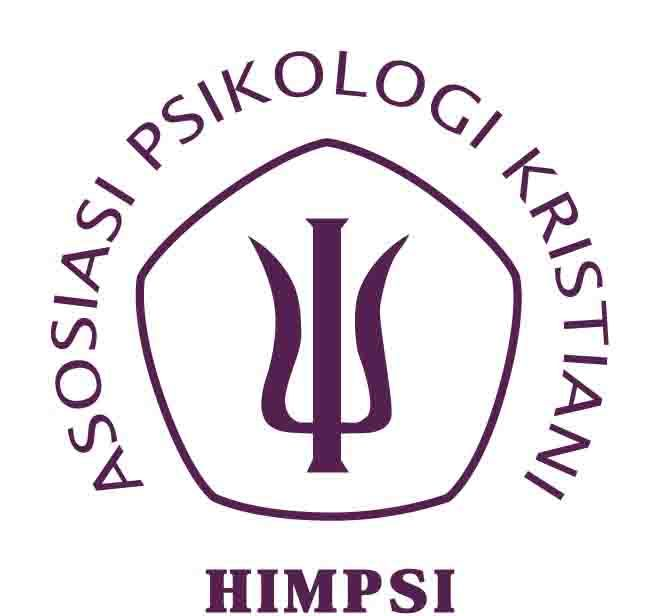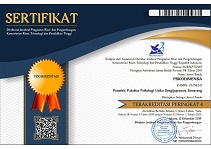The Differences in Executive Function, Protein Intake, and Daily Activities Function of Elderly Living in Urban and Rural Area
Abstract
Keywords
Full Text:
PDFReferences
Bales, C. W., & Ritchie, C. S. (2002). Sarcopenia, weight loss, and nutritional frailty in the elderly. Annual review of nutrition, 22(1), 309-323.
Banich, M. T. (2004). Cognitive neuroscience and neuropsychology. Boston: Houghton Mifflin.
Baum, J. I., Kim, I. Y., & Wolfe, R. R. (2016). Protein consumption and the elderly: what is the optimal level of intake?. Nutrients, 8(6), 359.
Bell-McGinty, S., Podell, K., Franzen, M., Baird, A.D., & Williams, M.J. (2002). Standard measures of executive function in predicting instrumental activities of daily living in older adults. International Journal of Geriatric Psychiatry, 17, 828 – 834.
Bernstein, M., & Munoz, N. (2012). Position of the Academy of Nutrition and Dietetics: food and nutrition for older adults: promoting health and wellness. Journal of the Academy of Nutrition and Dietetics, 112(8), 1255-1277.
Cahn-Weiner, D.A., Malloy, P.F., Boyle, P.A., Marran, M., & Salloway, S. (2000). Prediction of functional status from Neuropsychological tests in community-dwelling elderly individuals. The Clinical Neuropsychologist, 14 (2), 187 – 195.
Cahn-Weiner, D. A., Boyle, P. A., & Malloy, P. F. (2002). Tests of Executive Function Predict Instrumental Activities of Daily Living in Community-Dwelling Older Individuals. Applied Neuropsychology, 9 (3), 187 – 191.
Dominguez, L. J., & Barbagallo, M. (2017). The relevance of nutrition for the concept of cognitive frailty. Current Opinion in Clinical Nutrition and Metabolic Care, 20(1), 61–68.
Drummond, B. & Brefere, L. (2013). Nutrition for Foodservice and Culinary Professionals (8th edition). Hoboken, NJ: John Wiley & Sons.
Engelheart, S., & Brummer, R. (2018). Assessment of nutritional status in the elderly: a proposed function-driven model. Food & nutrition research, 62.
Fadhia, N., Ulfiana, E., & Ismono, S. R. (2011). Hubungan Fungsi Kognitif Dengan Kemandirian dalam Melakukan Activities of Daily Living (ADL) Pada Lansia di UPT PSLU Pasuruan. Universitas Airlangga
Hacihasanoglu, R., Yildirim, A., & Karakurt, A. (2012). Loneliness in Elderly Individuals, level of dependence in activities of daily living, and influential factors. Archieves of gerontology and geriatrics. Elsevier, 54 (1), 61-66.
Hardywinoto & Setiabudhi, T. (2005). Panduan Gerontologi. Jakarta : Gramedia.
Heriawan, R. (2010). Klasifikasi Perkotaan dan Perdesaan di Indonesia, Buku 2: Jawa. Cetakan Kedua. Badan Pusat Ststistik.
Isanejad, M., Mursu, J., Sirola, J., Kröger, H., Rikkonen, T., Tuppurainen, M., & Erkkilä, A. T. (2016). Dietary protein intake is associated with better physical function and muscle strength among elderly women. British Journal of Nutrition, 115(7), 1281-1291.
Johnson, N., Barion, A., Rademaker, A., Rehkemper, G., & Weintraub, S. (2004). The Activities of Daily Living Questionnaire: a validation study in patients with dementia. Alzheimer disease & associated disorders, 18(4), 223-230.
Lutz, M., Petzold, G., & Albala, C. (2019). Considerations for the Development of Innovative Foods to Improve Nutrition in Older Adults. Nutrients, 11(6), 1275.
Kant A. K. (1996). Indexes of overall diet quality: a review. Journal of the American Dietetic Association, 96(8), 785–791. https://doi.org/10.1016/S0002-8223(96)00217-9
Kemenkes. (2018). Survey Konsumsi Pangan. Pusat Pendidikan Sumber Daya Manusia Kesehatan. Diakses dari: http://bppsdmk.kemkes.go.id/pusdiksdmk/wp-content/uploads/2018/09/Survey-Konsumsi-Pangan_SC.pdf
Kementerian Kesehatan RI. 2014. Pedoman Gizi Seimbang. Direktur Jenderal Bina Gizi dan KIA. Jakarta
Kessels R.P.C., & Hendriks M.P.H. (2016). Neuropsychological Assessment. In: Howard S. Friedman (Editor), Encyclopedia of Mental Health, 2nd edition, Vol 3 (pp. 197-201). Waltham: Academic Press.
Krebs-Smith, S. M., Smiciklas-Wright, H., Guthrie, H. A., & Krebs-Smith, J. (1987). The effects of variety in food choices on dietary quality. Journal of the American Dietetic Association, 87(7), 897–903.
Mahan, L. K., Escott-Stump, S., Raymond, J. L., & Krause, M. V. (2017). Krause's food & the nutrition care process (14th edition). St. Louis, Mo.: Elsevier/Saunders.
Maliki. (2019, Oktober). Demographic Bonus, Challenge, and Opportunity to promote productive ageing. Paper dipresentasikan pada 2nd ASEAN Conference on Healthy Ageing, Denpasar, Bali.
Marshall, T. A., Stumbo, P. J., Warren, J. J., & Xie, X. J. (2001). Inadequate nutrient intakes are common and are associated with low diet variety in rural, community-dwelling elderly. The Journal of nutrition, 131(8), 2192–2196. https://doi.org/10.1093/jn/131.8.2192
Milla n-Calenti, J. C., Tubio, J., Pita-Fernandez , S., Gonzalez-Abraldes, I., Lorenzo, T., Fernandez-Arruty, T., & Maseda, A. (2010). Prevalence of functional disability in activities of daily living (ADL), instrumental activities of daily living (IADL) and associated factors, as predictors of morbidity and mortality. Archives of Gerontology and Geriatrics, 50, 306–310.
Pandaleke, A. (2015). Sosiologi Perkotaan. Bogor: Maxindo Internasional
Perissinoto, C.M., Cenzer, I.S., & Covinsky, K.E. (2012). Loneliness in older person: a predictor of functional decline and death. American Medical Association. Retieved from https://jamanetwork.com/on07/11/2020
Riani, A.D., & Halim, M.S., (2019). Fungsi Kognitif Lansia yang beraktifitas kognitif secara rutin dan tidak rutin. Jurnal Psikologi, 46 (2), 85-101.
Royall, D. R., Palmer, R., Chiodo, L. K., & Polk, M. J. (2004). Declining executive control in normal aging predicts change in functional status: The Freedom House Study. Journal of American Geriatric Society, 52, 346 – 352.
Ruan, Q., Yu, Z., Chen, M., Bao, Z., Li, J., & He, W. (2015). Cognitive frailty, a novel target for the prevention of elderly dependency. Ageing Research Reviews, 20, 1–10.
Santos, D. M. D., & Sichieri, R. (2005). Body mass index and measures of adiposity among elderly adults. Revista de saúde Pública, 39(2), 163-168.
Setiabudi, I. D. P. P. (2019, Oktober). Improving Home Care Service for Elderly. Paper dipresentasikan di 2nd ASEAN Conference on Healthy Ageing, Denpasar, Bali.
Setiahardja, A. S. (2005). Penilaian Keseimbangan Dengan Aktivitas Kehidupan Sehari-Hari Pada Lansia Dip Anti Werdha Pelkris Elim Semarang Dengan Menggunakan Berg Balance Scale Dan Indeks Barthel. Skripsi. Semarang: Universitas Diponegoro.
Setiati, S. (2019, Oktober). Healthy Ageing: From Geriatric Perspective. Paper dipresentasikan di 2nd ASEAN Conference on Healthy Ageing, Denpasar, Bali.
Storeng, S. H., Sund, E. R., & Krokstad, S. (2018). Factors Associated With Basic and Instrumental Activities of Daily Living in Elderly Participants of a Populationbased Survey: The Nord-Trøndelag Health Study, Norway. BMJ Open, 1 – 10.
Sulastri, A., Abimanyu, C.V.R., & Putri, A.P.E. (2019, Oktober). Executive Functioning status of elderly living with family and in community dwelling: Effects of age, education and gender. Paper dipresentasikan di 2nd ASEAN Conference on Healthy Ageing, Denpasar, Bali.
Susilawati, N. (2019). Sosiologi Pedesaan. Retrieved from: https://doi.org/10.31227/osf.io/67an9
Suyasa, I. G. P. D. (2019, Oktober). Self-care management for older people living in the community. Paper dipresentasikan di 2nd ASEAN Conference on Healthy Ageing, Denpasar, Bali.
Tieland, M., Borgonjen-Van den Berg, K. J., van Loon, L. J., & de Groot, L. C. (2012). Dietary protein intake in community-dwelling, frail, and institutionalized elderly people: scope for improvement. European journal of nutrition, 51(2), 173-179.
Van Der Zwaluw, N. L., Van De Rest, O., Tieland M., et al. (2014). The impact of protein supplementation on cognitive performance in frail elderly. Eur J Nutr, 53, 803-812. https://doi.org/10.1007/s00394-013-0584-9.
Volkert, D., & Schrader, E. (2013). Dietary assessment methods for older persons: what is the best approach?. Current Opinion in Clinical Nutrition & Metabolic Care, 16(5), 534-540.
World Health Organization. (2015). World report on ageing and health. World Health Organization.
Xie, H., Chena, P., Zhaoa, L., Suna, X., & Jiac, X. (2018). Relationship between activities of daily living and depression among older adults and the quality of life of family caregivers. Frontiers of Nursing, 5(2), 97 – 104.
Zhang, T., Yan, R., Chen, Q., Ying, X., Zhai, Y., Li, F., ... & Lin, J. (2018). Body mass index, waist-to-hip ratio and cognitive function among Chinese elderly: a cross-sectional study. BMJ open, 8(10), e022055.
DOI: https://doi.org/10.24167/psidim.v19i2.2927
Print ISSN : 1411-6073 | online ISSN : 2579-6321 View My Stats

This work is licensed under a Creative Commons Attribution 4.0 International License.




















